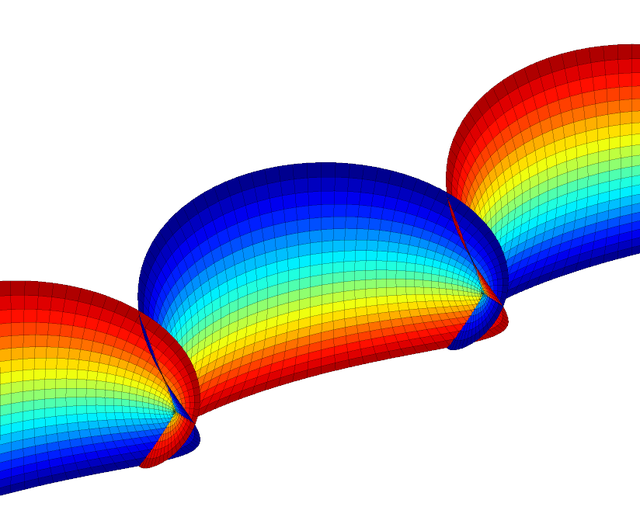Top Qs
Timeline
Chat
Perspective
Björling problem
Problem in differential geometry From Wikipedia, the free encyclopedia
Remove ads
In differential geometry, the Björling problem is the problem of finding a minimal surface passing through a given curve with prescribed normal (or tangent planes). The problem was posed and solved by Swedish mathematician Emanuel Gabriel Björling,[1] with further refinement by Hermann Schwarz.[2]

The problem can be solved by extending the surface from the curve using complex analytic continuation. If is a real analytic curve in defined over an interval I, with and a vector field along c such that and , then the following surface is minimal:
where , , and is a simply connected domain where the interval is included and the power series expansions of and are convergent.[3]
A classic example is Catalan's minimal surface, which passes through a cycloid curve. Applying the method to a semicubical parabola produces the Henneberg surface, and to a circle (with a suitably twisted normal field) a minimal Möbius strip.[4]
A unique solution always exists. It can be viewed as a Cauchy problem for minimal surfaces, allowing one to find a surface if a geodesic, asymptote or lines of curvature is known. In particular, if the curve is planar and geodesic, then the plane of the curve will be a symmetry plane of the surface.[5]
Remove ads
References
External image galleries
Wikiwand - on
Seamless Wikipedia browsing. On steroids.
Remove ads










